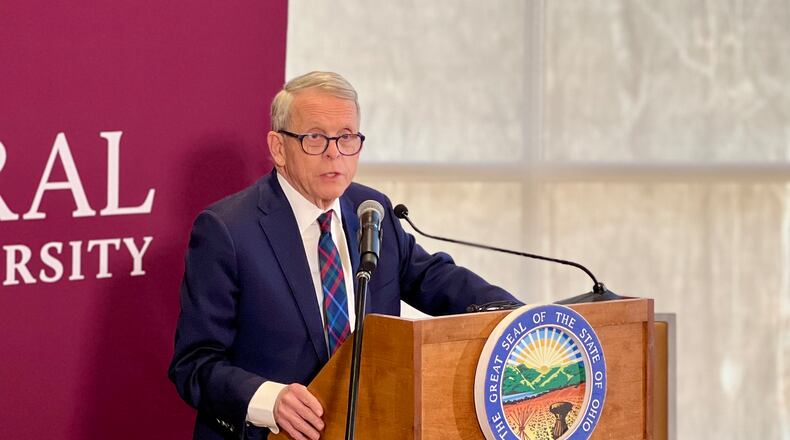The governor and lieutenant governor announced the kick off of the Super RAPIDS application period in September, highlighting the state budget’s provision of $100 million to fund the program.
During Friday’s press conference at CSU, DeWine announced the schools set to receive awards through the grant program. Schools in the Dayton region that will receive grants include CSU, Clark State College, Edison State Community College, Sinclair Community College, Wright State University, Greene County Career Center, and Upper Valley Career Center.
“The world is changing so very, very fast and we want our students—whether they’re in career tech, whether they’re in our two-year colleges, community colleges, or four-year institutions—to have state-of-the-art equipment,” DeWine said.
Job creation in Ohio is up, DeWine said, prompting the need for educational institutions to prepare students to meet increasing workforce needs.
“It’s a very important time. More and more companies are building and growing in Ohio ... (and) frankly, we’re creating more jobs in Ohio than we have people to fill them,” he said. “It’s about people trying to live up to their full potential and having the right equipment is one of the ways to do this.”
DeWine highlighted industries with businesses throughout the state that will benefit from the Super RAPIDS initiative, including advanced manufacturing, cybersecurity, broadband, healthcare, and robotics.
One such business within the manufacturing industry is Intel, which is investing more than $20 billion to build two semiconductor chip manufacturing facilities in Licking County.
According to Kevin Hoggatt, a representative for Intel who spoke during Friday’s event at CSU, the company itself made a $50 million commitment to Ohio higher education to develop training programs, which he said will complement the grant program.
“In addition to Central State, several of the 81 schools that are receiving funding today are working very closely with Intel on programs, from a one-year credential to an advanced engineering degree and everything in between,” Hoggatt said.
“This $40 million in equipment funding to the Super RAPIDS program will help ensure that Ohio is producing the workforce that Intel and other employers need in the years ahead,” he added.
Jack Hershey, president of the Ohio Association of Community Colleges, also spoke Friday and noted that although the RAPIDS program has been around for years, having first been introduced in 2014, the latest version’s inclusion of input from area businesses is crucial.
“Now, all of these projects that are being funded today have been vetted by local business,” Hershey said. “So we know that this is a wise use of state funds because local business, who’s trying to figure out their own workforce needs, have said, ‘Yes, that equipment is what we need in order to train the workforce of tomorrow.’”
About the Author

